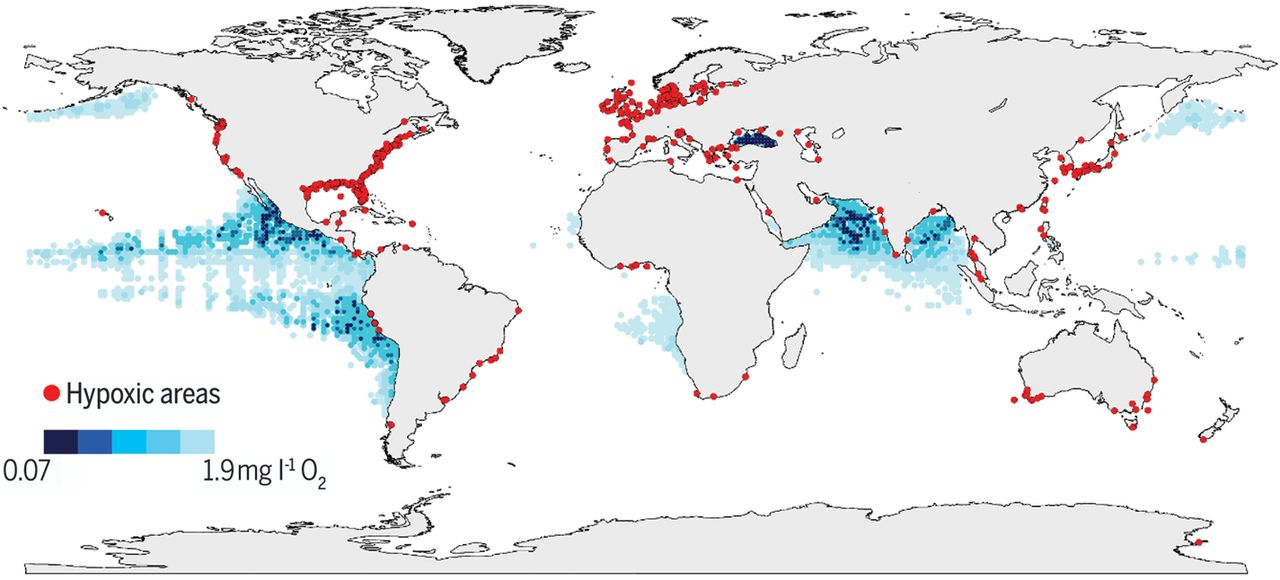The NCCOS Competitive Research Program is pleased to announce a Fiscal Year 2023 Notice of Funding Opportunity (NOFO) for its Coastal Hypoxia Research Program. This funding opportunity seeks to improve the ability of resource managers to effectively prevent or mitigate the ecological and economic impacts of hypoxia on coastal, marine, and Great Lakes ecosystems. The research will produce actionable information and user-driven products that will enable resource managers to assess management and policy strategies, as well as increase scientific understanding on how hypoxia is threatening ecosystems and communities.
Hypoxia, or low dissolved oxygen, is a globally expanding problem impacting aquatic ecosystems. Over half of U.S. estuaries experience natural or human-induced hypoxic conditions at some time each year, and the frequency and duration of hypoxic events have increased exponentially over the last few decades. Under climate change, increasing temperatures and hypoxia will considerably constrain suitable species habitat and could result in a wide range of detrimental effects on living resources.
NOAA is soliciting proposals to improve our understanding of the effects of hypoxia on living resources, habitats, and food webs, and potential synergies with other environmental stressors. NOAA’s Coastal Hypoxia Research Program is making $1.5 million available through this competition to fund three to five projects for the first year, and expects to fund selected projects at the level of $300,000 to $400,000 a year, for up to four years in duration.
Full applications are due January 10, 2023. Letters of intent are not required. View the full NOFO here.

